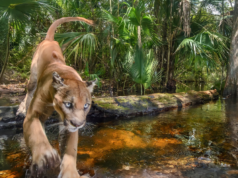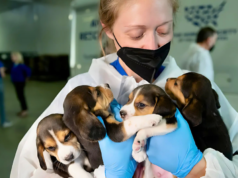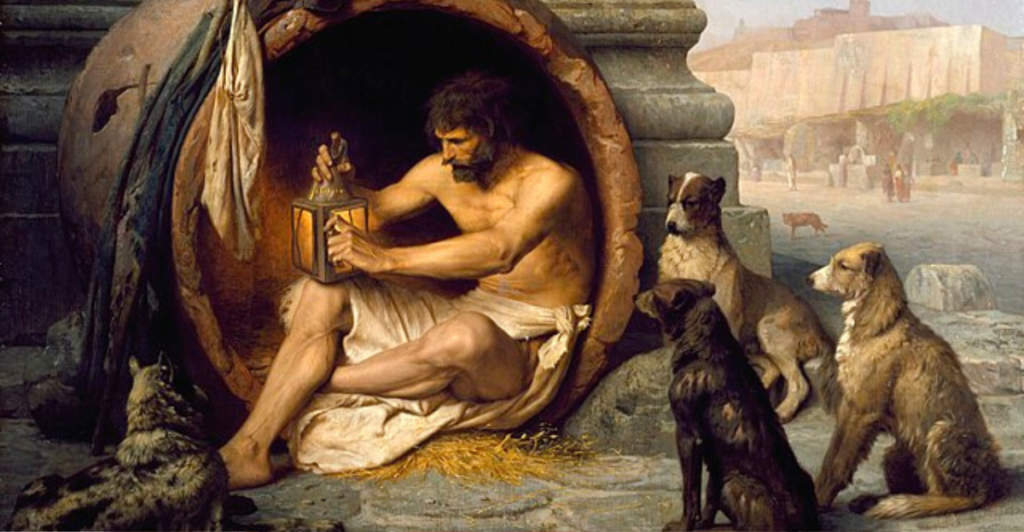
Dogs have long been cherished companions of humans, embodying loyalty, courage, and companionship. Renaissance art, celebrated for its intricate storytelling and symbolism, frequently features dogs as emblematic figures. Often seen lounging in noble settings or alertly guarding their masters, these furry companions serve not just as aesthetic elements but as integral contributors to the narrative and symbolic layers of famous paintings.
Dogs as Symbols of Fidelity
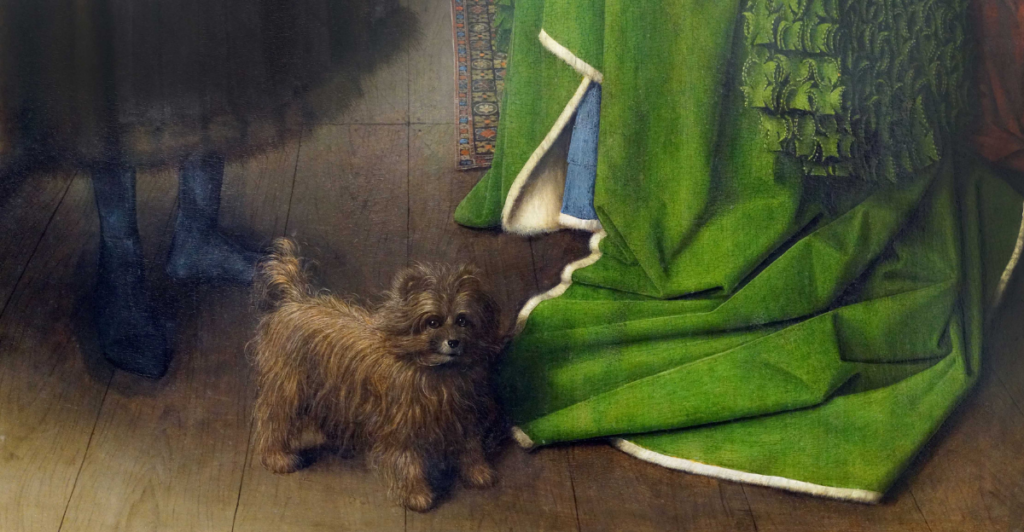
One of the most iconic uses of dogs in Renaissance paintings is as symbols of fidelity. In Jan van Eyck’s The Arnolfini Portrait (1434), a small, fluffy dog stands at the couple’s feet, embodying loyalty and faithfulness in marriage. This tiny creature is not merely a pet but a metaphor for the virtues that bind the couple. The dog’s direct gaze at the viewer invites an understanding of the profound trust depicted in the painting.
Guardians of the Hunt: Titian’s Masterpieces
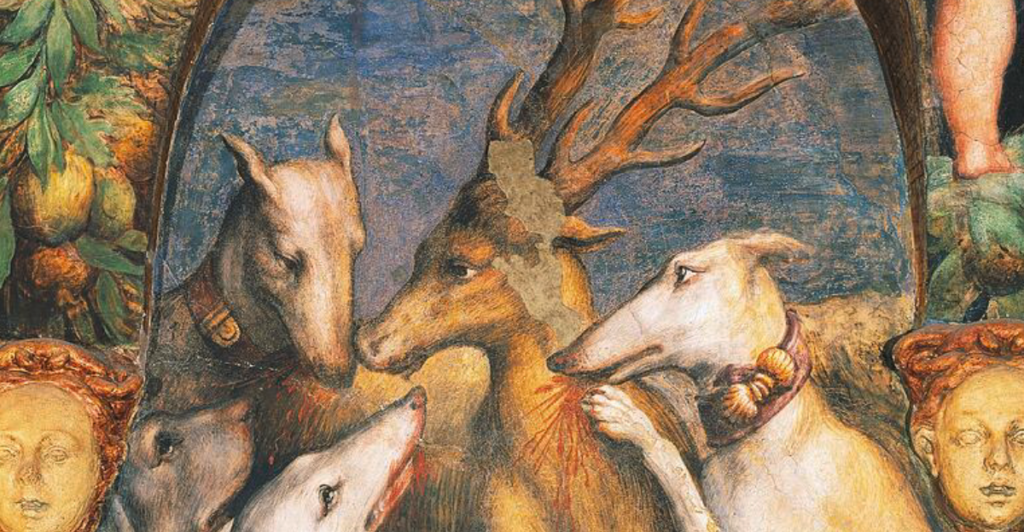
Titian, one of the leading painters of the Italian Renaissance, often incorporated dogs into his depictions of mythological and aristocratic themes. In Diana and Actaeon (1556-1559), the dogs accompanying Actaeon highlight his role as a hunter. Their muscular forms, caught mid-motion, exude vitality and loyalty, reinforcing the narrative of Actaeon’s tragic transformation into a stag after witnessing the goddess Diana bathing.
Lapdogs and Status in Courtly Life
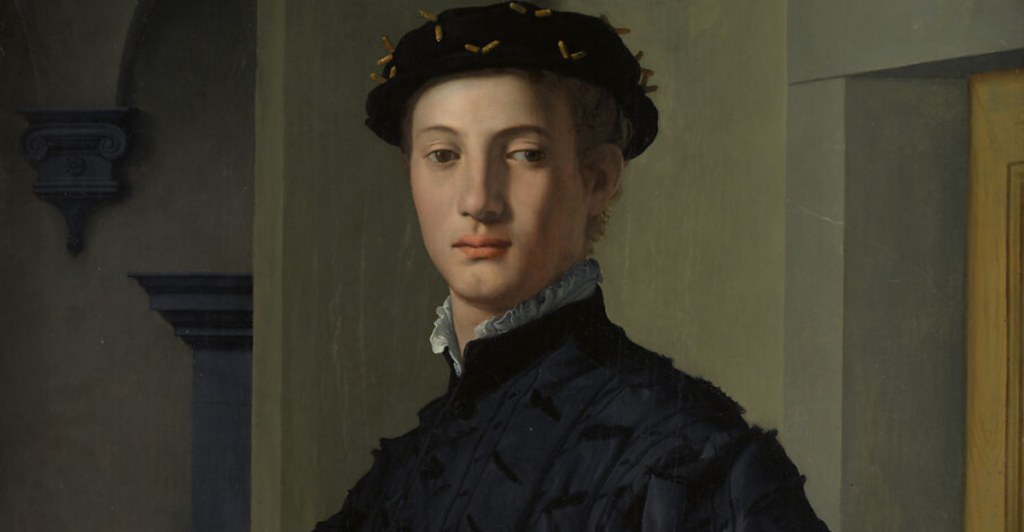
During the Renaissance, lapdogs were symbols of wealth and status, often depicted alongside their noble owners. In Bronzino’s Portrait of a Young Man with a Dog (1530s), a delicate dog rests on the sitter’s lap, underscoring the sitter’s elite status. The meticulously painted fur of the animal mirrors the luxurious textures of the man’s clothing, symbolizing refinement and leisure.
Dogs as Protectors: The Case of Veronese
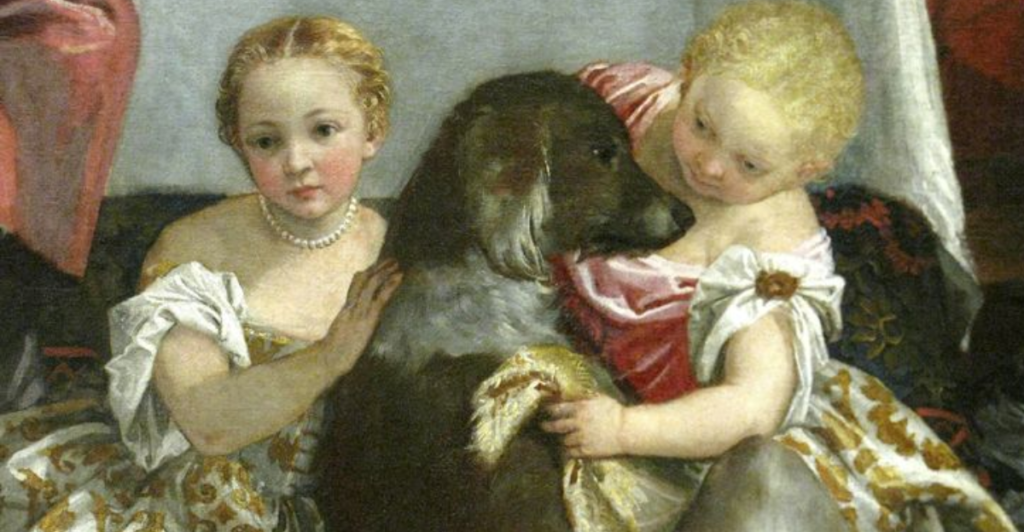
Paolo Veronese’s The Wedding at Cana (1563) is a sprawling masterpiece teeming with life, and among the crowd, a dog can be seen at the foot of the table. This inclusion of a canine figure may seem minor, but it serves to ground the scene in a sense of realism and warmth, reminding viewers of dogs’ roles as guardians and companions in communal settings.
Symbolism and Mythology: The Hound in Botticelli
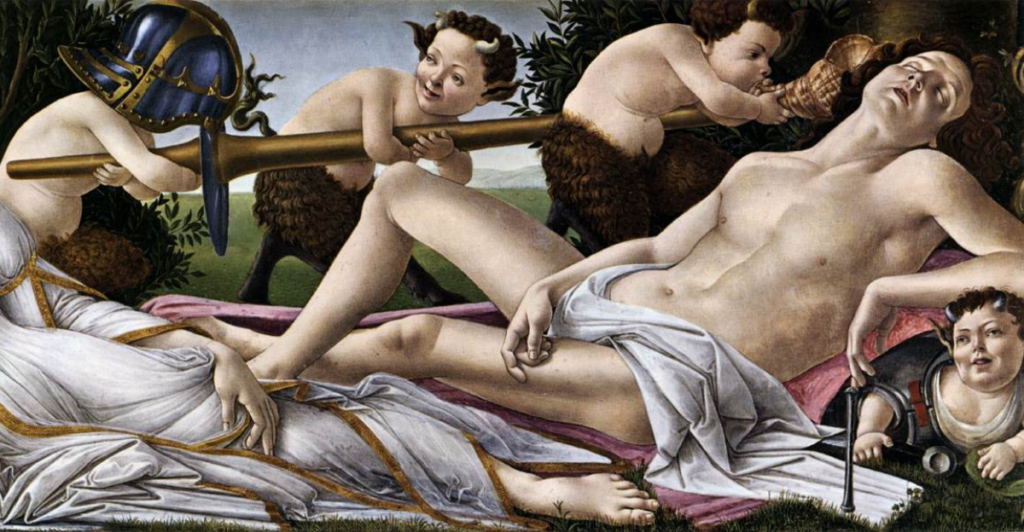
In Sandro Botticelli’s Venus and Mars (1483), a small hound appears at the feet of Venus. This dog is not merely a decorative addition; it symbolizes the taming of martial aggression by love. The tranquil pose of the hound contrasts with the vibrant energy of the central figures, offering a nuanced layer of storytelling through its subdued presence.
Dogs in Religious Imagery
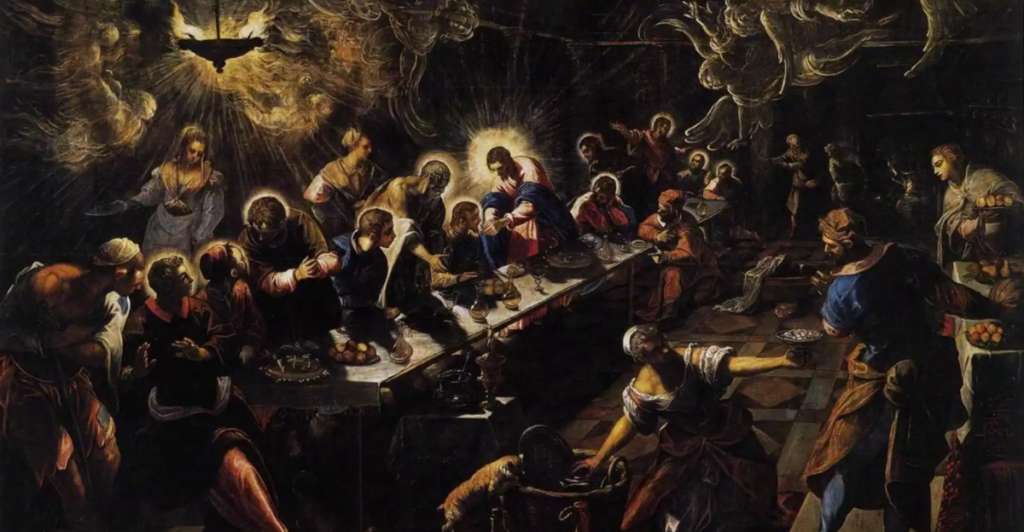
Renaissance artists also incorporated dogs into religious paintings, using them to convey themes of faith and divine protection. For instance, in The Last Supper by Jacopo Tintoretto (1592–1594), a small dog lurks near the table, subtly alluding to loyalty amidst the betrayal unfolding in the narrative. Such details emphasize the emotional undertones of the scene.
The Artistic Challenge of Painting Dogs
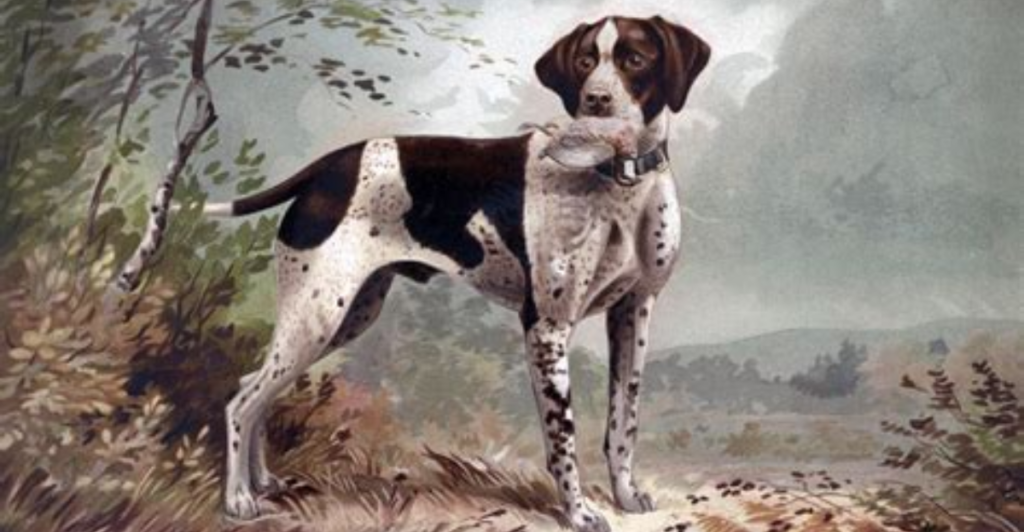
Renaissance artists displayed remarkable skill in portraying the unique anatomy and personalities of dogs. These animals, often painted with a mix of realism and idealization, posed a particular challenge. The textures of fur, the shine in their eyes, and their dynamic postures required mastery of observation and technique, further highlighting the artists’ genius.
Cultural Evolution of Canine Representation
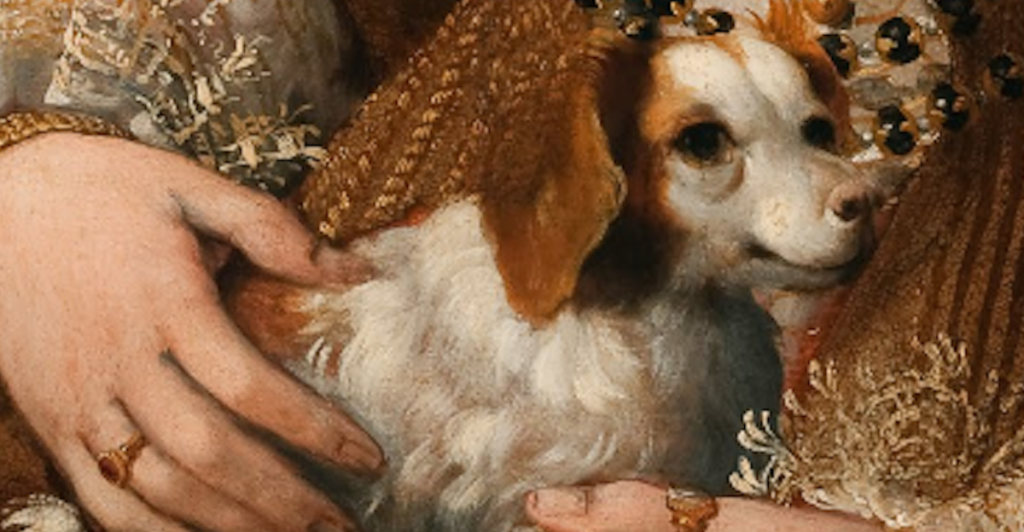
While the presence of dogs in art dates back to antiquity, the Renaissance marked a shift in their portrayal. No longer mere background details, dogs were given more significant roles, often acting as silent narrators of a painting’s story. This reflects the evolving relationship between humans and their canine companions during this era.
Regional Variations in Depictions
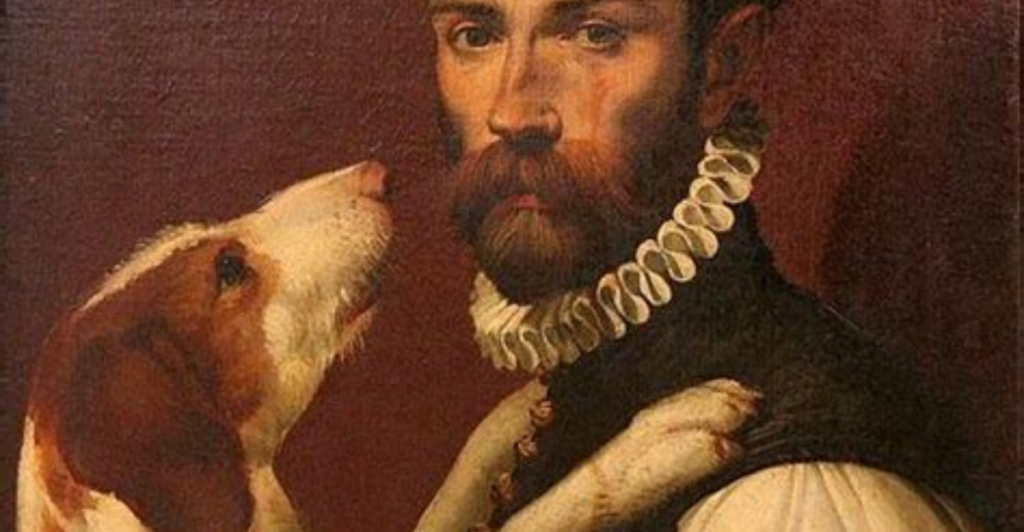
The representation of dogs varied across regions during the Renaissance. In Northern European paintings, dogs often symbolized middle-class virtues, appearing in domestic scenes. Conversely, in Italian art, they were frequently associated with nobility and mythological allegories. This diversity showcases the adaptability of canine imagery to different cultural narratives.
Dogs as Emotional Anchors
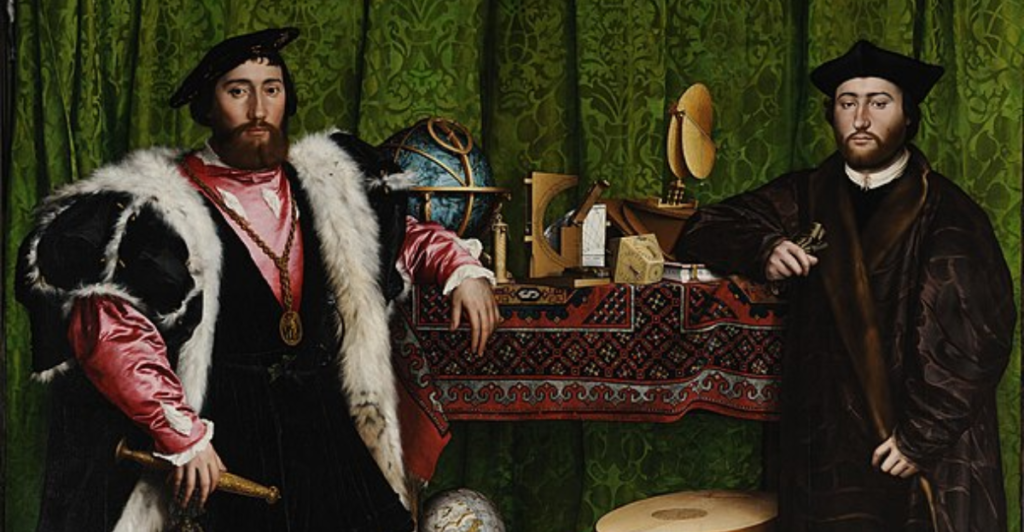
Beyond their symbolic roles, dogs often serve as emotional anchors in Renaissance art. Their presence adds warmth and familiarity, inviting viewers to connect with the human subjects. In paintings like The Ambassadors by Hans Holbein the Younger (1533), the inclusion of a dog softens the formality of the scene, offering a glimpse into the human side of its subjects.
Lesser-Known Canine Appearances
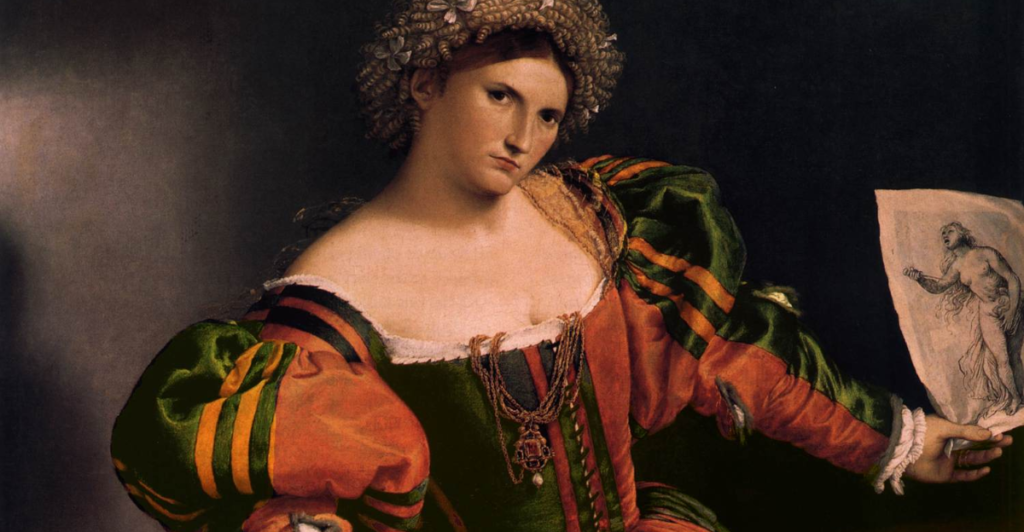
While famous works like The Arnolfini Portrait receive much attention, lesser-known paintings also showcase dogs in intriguing ways. For example, Lorenzo Lotto’s Portrait of a Lady as Lucretia (1533) includes a small dog at the sitter’s feet, symbolizing the virtue and chastity associated with Lucretia. Such details often go unnoticed but enrich the narrative depth of these works.
A Timeless Bond
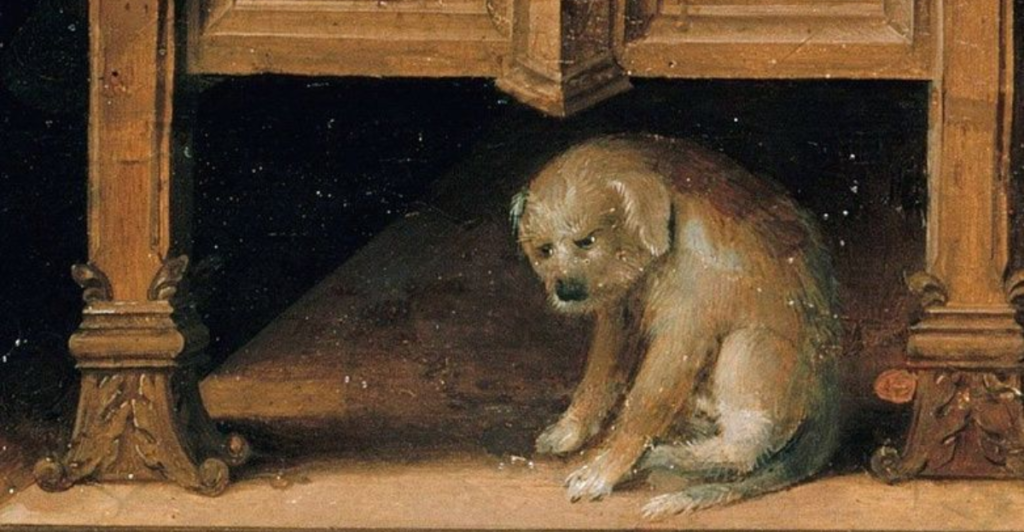
Dogs in Renaissance art transcend their roles as mere pets to become symbols, companions, and narrative devices. Through their careful depiction, these animals offer insights into the societal values, emotional connections, and artistic innovations of the period. The Renaissance’s enduring fascination with dogs not only celebrates the bond between humans and animals but also immortalizes this relationship in the timeless language of art.
Whether as loyal guardians, symbols of virtue, or playful companions, the dogs in Renaissance paintings remind us of their integral role in both life and art. The next time you admire a masterpiece, look for the hidden canine companion—it might just offer a new perspective on the story the painting seeks to tell.
Stay connected with us for more stories like this! Follow us to get the latest updates or hit the Follow button at the top of this article, and let us know what you think by leaving your feedback below. We’d love to hear from you!


